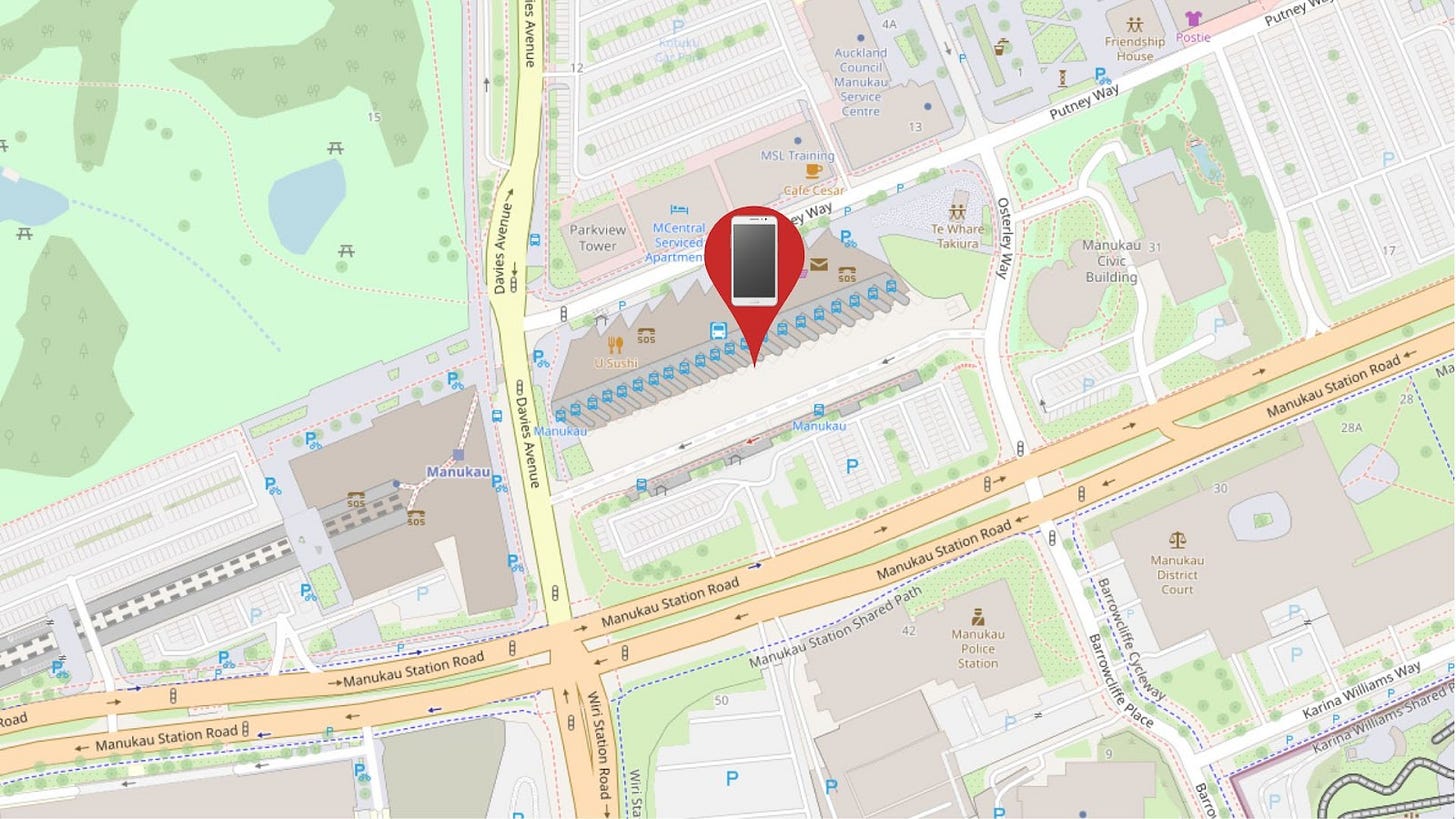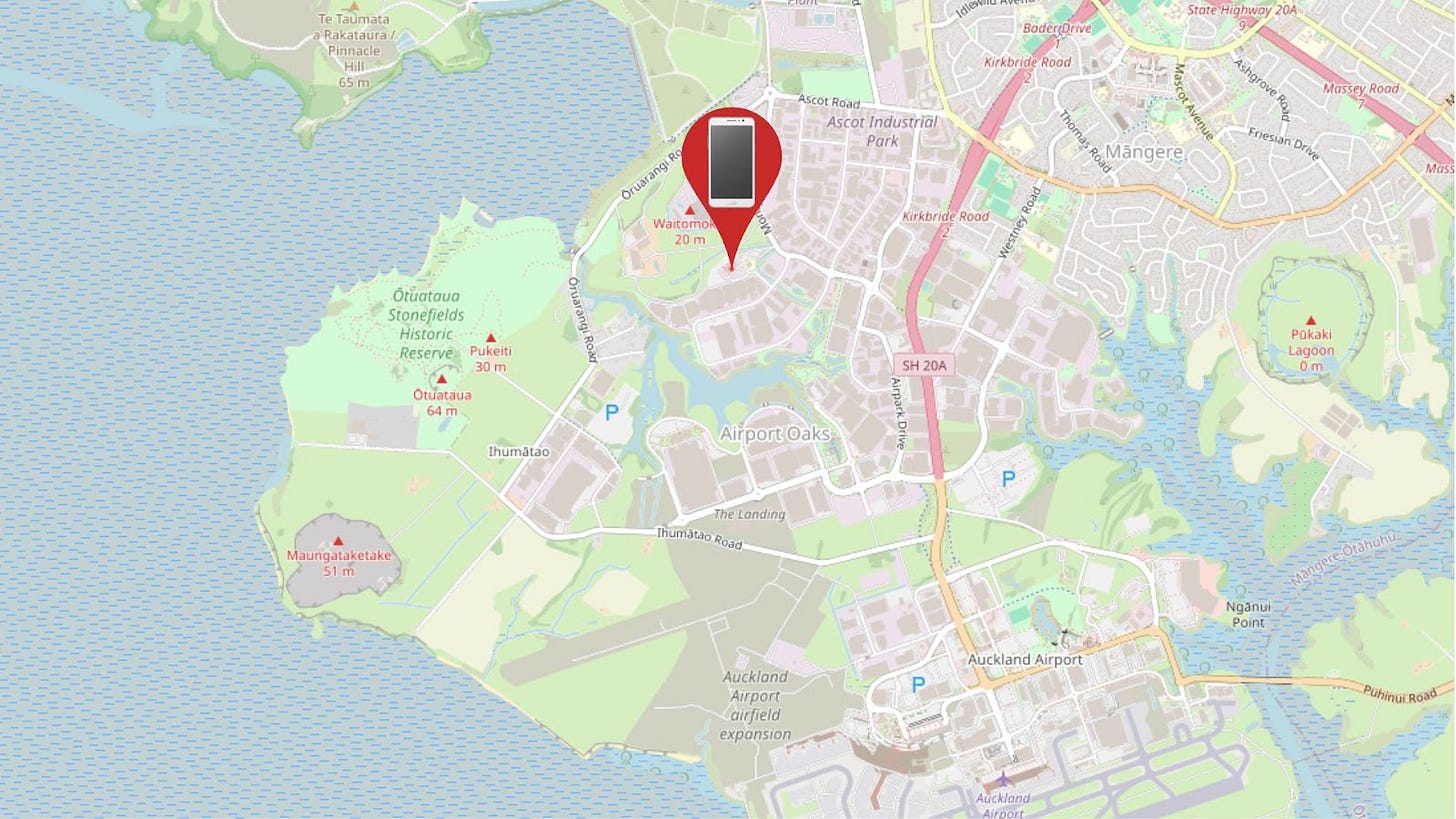Scott Pilkington: Trying to recover a forgotten phone without a car
A real-life look at how car-centric public transport systems are, and the assumption that travel by car is a priority, and public transport is plan C.
This is a guest post from Scott Pilkington it originally appeared as a BlueSky thread and has been added to by Scott and republished here with permission.
Last night I flew back from Ōtepoti. Approx 2 hours, 90 of which in the air. Caught the airport bus to Puhinui, train home. Except I cleverly left my phone on the bus.
By the time we got to Waitematā Britomart at 8:30 pm, customer service was closed. A wonderful staff member was still there to help me out.
Now, all services are run through Auckland Transport, but by a variety of providers. So even knowing which bus I was on, we weren't sure which number to call to speak to the right company.
Eventually got to GoBus, the AirportLink operator (part of the Go / Kinetic / Johnson group). No one had found anything yet. The Waitematā Britomart staff member gave her details to the GoBus controller and requested a call back.
In the meantime, I went home, and once on the WiFi could use my laptop to track my phone. It was somewhere in the Manukau bus terminal.
Rang GoBus, eventually got through to the right person.
No one has found it. I call it from the laptop.
It updates and says it is now near the domestic airport - it must still be on the bus!
Eventually the driver finds it and answers it. Great. He talks to me on the phone and the controller over the radio. Great. He'll deliver it to the depot.
Can I come get it at 22.58 when he comes in? Unlikely that transit runs that late. I arranged to come in in the morning.
The depot is near the airport, a block from Archives New Zealand. No clear public transport.
So, being sans-phone, I’m also sans-alarms, so I get up when my husband goes off for a pre-work workout (who does that?!). After a hot shower and hanging out the washing, I leave home at 6.20 am and get on the 6.30 train from Waitematā Britomart. The plan is to train to Puhinui, AirportLink, and then the No. 38 from the domestic terminal towards Māngere.
When I get to the domestic terminal, the timetable says the No. 38 is just a 10-minute wait. But it’s over 10 minutes late. No electronic board at the airport, just a QR code to look at timetables online or download the app.
Take the bus a few stops, then a 20-minute walk to the depot. Often there are no footpaths, so I have to walk the long way to stay safe on industrial roads. Get there just before 8.30. 2 hours to the depot. Oof.
Eventually, I get the phone back. Manage the walk back in about 15 minutes. Now I can use the AT app. Plan is: catch the No. 38 back to the domestic terminal, the airport link back to Puhinui, and the train back to the city. Expected time: 1 hour, 48 minutes. There are quicker options, but involve multiple bus transfers, so I’m not keen as we don’t know that the buses will wait.
The next bus is in 13 minutes. Great. Except it's delayed 17 minutes beyond the scheduled time, and the next one is cancelled. Fortunately I can now use my phone to plan an alternate route, so I'm taking the No. 38 the other way, heading up to Onehunga to catch a train to Newmarket, and then another to Waitematā Britomart.
Without thinking, I arrive at Onehunga train station to discover the next train is cancelled, and it is nearly an hour to the next one (of course it is), so I need to catch another bus to Newmarket and get a train from there. I have an 11 am doctor’s appointment, and thought leaving 2.5 hours to get from Māngere to the city would be heaps of time. Now I’ll only make it by a hair!
In fact, I made it by 1 minute, and that was by running through Newmarket from the bus stop to the train, and riding a scooter from Waitematā Britomart to my doctor’s office (and begging to use their bathroom).
I’ve spent more time trying to get from Māngere to the Waitematā Britomart than it took to fly from Ōtepoti to Tāmaki Makaurau. Fortunately, I have a flexible job, and when I explained the whole situation to my boss, she said to sort that out first and we’d figure the rest out later. But what if I didn’t? What if these steps were outside of my accessibility abilities?
The rant is how inaccessible this has been. Every interaction with the bus company has had an assumption that I could just drive to the depot. It has never occurred to anyone that people take public transport out of necessity, not just cos they like to nap during their commute!
Similarly, an accessibility assumption. The depot office was on the far side of the yard, walking through an unmarked part of a big carpark of moving buses. It assumes you have a smartphone, ability to walk long distances, and no visual impediment.
This is just an example of our systems letting us down.
Today's excursion has proved how car-centred our public transport systems are. Assumption is to travel by car as a priority and public transport as plan C. Google reckons if I'd gone by car it would've taken around 25 mins each way, and around 1 hour 48 each way by public transport. It took 4 hours and 40 minutes. No chance to stop for water or a bathroom break either. I started early, and it still took until 11 am.
I had a long time to ruminate and reflect (and rant) about the situation, and while I also got to have a whinge and a whine, it kept reminding me of the following assumptions:
Most people can access a car as primary transportation
Everyone has a charged smartphone with data and knows how to use it
The time of people in poverty who don’t fall under the first two doesn’t matter - you wouldn’t expect to see cancelled services and a lack of express services during peak times in Epsom or Ellerslie
It’s better to schedule and then cancel a service without warning or replacement than admit you don’t have the resources to offer it in the first place
This divide and conquer approach to public transport means a lack of customer-focused initiatives and processes. I’d be willing to wager that the people engineering the system to keep it this bad have never had to use it.
Perhaps we need more incentives for systems to be better. I once had a taxi driver suggest the following scenario based on something they’d encountered overseas. Maybe if it was a requirement that all council and government staff who earned over a threshold, say 100k - are limited to 1 car per household but with unlimited public transport. I imagine folks in charge would change things fast then. Services wouldn’t just drop off. Accessibility points would be covered and resourced. Better public transport would be the first plan, not plan C (or plan Z).
For example: the airport link bus turns around at Manukau interchange. Could my phone have been secured there for collection? There are buses and trains that go there directly. However, that’s managed by a different provider, and from observation, we obviously can’t have a system where providers work collaboratively (haha)! There were multiple times the bus was stuck in traffic - particularly in Māngere - despite the roads being wide enough for bus lanes. While we wouldn’t anticipate peak service bus lanes still operating at 11 am, remember I left at 6.20 am, and should’ve been able to make this whole trip and snuck into work around 10 am.
Finally, I was just plain super lucky. I was lucky I could do all the steps. People with accessibility needs would’ve had to give up way earlier in the process. I was lucky that I vaguely knew where I was going without a map. I was lucky I could walk to Waitematā Britomart and I wasn’t starting in Whangaparāoa, Kumeū, Beachlands, or Clarks Beach. I was lucky the trip wasn’t in vain. I was lucky that my work was understanding. I was lucky I met the customer service rep at Waitematā Britomart. I was lucky it wasn’t raining. I was lucky I made it back to my doctor’s appointment. But public transit shouldn’t be about luck.
If you would like to submit a guest post please email us nztransitbuzz@gmail.com.









